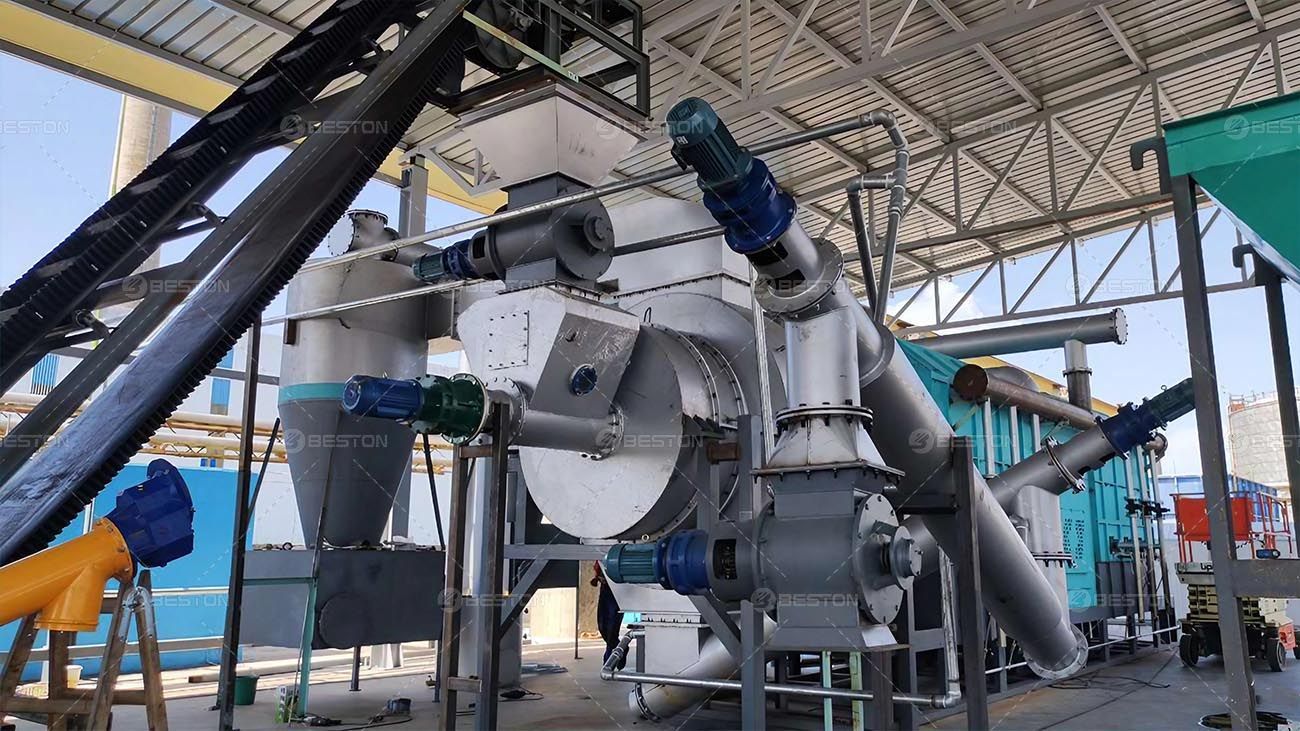Advantages of Continuous Operation in Biochar Reactor

The efficiency and sustainability of biochar production depend significantly on the operation mode of the reactor. Among various operational configurations, continuous operation stands out as a highly effective method, especially for large-scale, industrial applications. A biochar reactor operating continuously can offer numerous advantages, from optimizing production output to reducing operational costs. Understanding the importance of this operational mode is crucial for maximizing the potential of biochar production systems.
Uninterrupted Production for High Output
The most apparent advantage of continuous operation for a biochar reactor is the ability to maintain uninterrupted production. In contrast to batch systems, where the reactor is loaded, processed, and unloaded intermittently, continuous systems operate seamlessly, allowing for a consistent flow of feedstock and biochar. This results in a higher throughput and greater overall production capacity, which is essential when dealing with large quantities of biomass feedstock.
By keeping the reactor running without the need for downtime between cycles, continuous systems maximize the utilization of equipment. This leads to higher efficiency and ensures that resources are used to their full potential. In industries that require a constant supply of biochar, continuous reactors provide the necessary scalability to meet demand and support large-scale operations.
Reduced Labor and Operational Costs
Continuous operation also helps reduce the labor and maintenance costs associated with biochar production equipment. Since the reactor does not require frequent shutdowns for reloading, unloading, or cleaning, the need for manual intervention is minimized. This decreases the amount of labor required for operational tasks and allows for a more automated system. As a result, staff can focus on monitoring the process, making it easier to maintain consistent quality and address any issues that may arise.
Moreover, continuous operation results in less wear and tear on equipment. In batch systems, frequent starts and stops place significant stress on the reactor components, leading to higher maintenance requirements. Continuous systems, on the other hand, experience less mechanical stress, contributing to a longer lifespan for the reactor and reducing the need for costly repairs or replacements.
The reduced operational downtime, coupled with a streamlined workflow, allows for more efficient energy consumption. With less energy needed to bring the system up to temperature repeatedly, continuous reactors can operate at a more consistent and energy-efficient level, lowering energy costs over time.
Enhanced Process Stability and Product Consistency
Another critical benefit of continuous operation is the enhanced stability it offers to the pyrolysis process. In batch systems, fluctuations in temperature, pressure, and feedstock input can lead to inconsistent product quality. Since the continuous reactor operates at a steady pace with a constant supply of biomass, the process becomes more stable. This leads to a more consistent production of biochar, which is crucial for maintaining product specifications and ensuring the desired characteristics of the final product.
Furthermore, the ability to maintain a controlled temperature and environment during the continuous process ensures that the biochar produced is of a higher quality. With less variation in heat distribution and biomass input, the consistency of the biochar’s physical and chemical properties, such as surface area and porosity, is greatly improved.
For industries that require high-quality biochar, such as agriculture or carbon sequestration, the ability to produce uniform biochar through continuous operation is essential. The improved product quality also allows for better customization of biochar to suit specific application needs, increasing its versatility in various sectors.
Environmental and Sustainability Benefits
Continuous biochar reactors contribute to sustainability in multiple ways. First, the consistent operation of the reactor reduces the need for raw material transportation and handling, leading to lower fuel consumption and carbon emissions associated with logistics. Moreover, the energy efficiency of continuous systems supports the use of renewable energy sources, further reducing the environmental impact of biochar production.
Continuous operation also ensures more effective carbon sequestration. Biochar produced from biomass through pyrolysis is a stable form of carbon, and the steady flow of biomass into the reactor ensures that more carbon is locked into the product rather than being released back into the atmosphere as CO2. This continuous sequestration process helps mitigate the effects of climate change, providing an environmentally friendly solution to carbon emissions.
Scalability and Long-Term Viability
For large-scale biochar production operations, continuous reactors are indispensable. The ability to scale up production efficiently makes them ideal for meeting the growing demand for biochar, particularly in sectors like agriculture, water treatment, and energy production. Continuous systems are capable of handling larger quantities of biomass with minimal increase in operational complexity. This scalability is essential for businesses aiming to grow their biochar production capacity in response to increasing market demand.
In addition, continuous operation ensures the long-term viability of biochar production projects. With minimal downtime and optimized resource utilization, the economic returns of operating a continuous biochar reactor are more predictable and sustainable. Businesses can plan their operations with greater certainty, knowing that they will have a reliable, ongoing source of biochar at a competitive cost.
